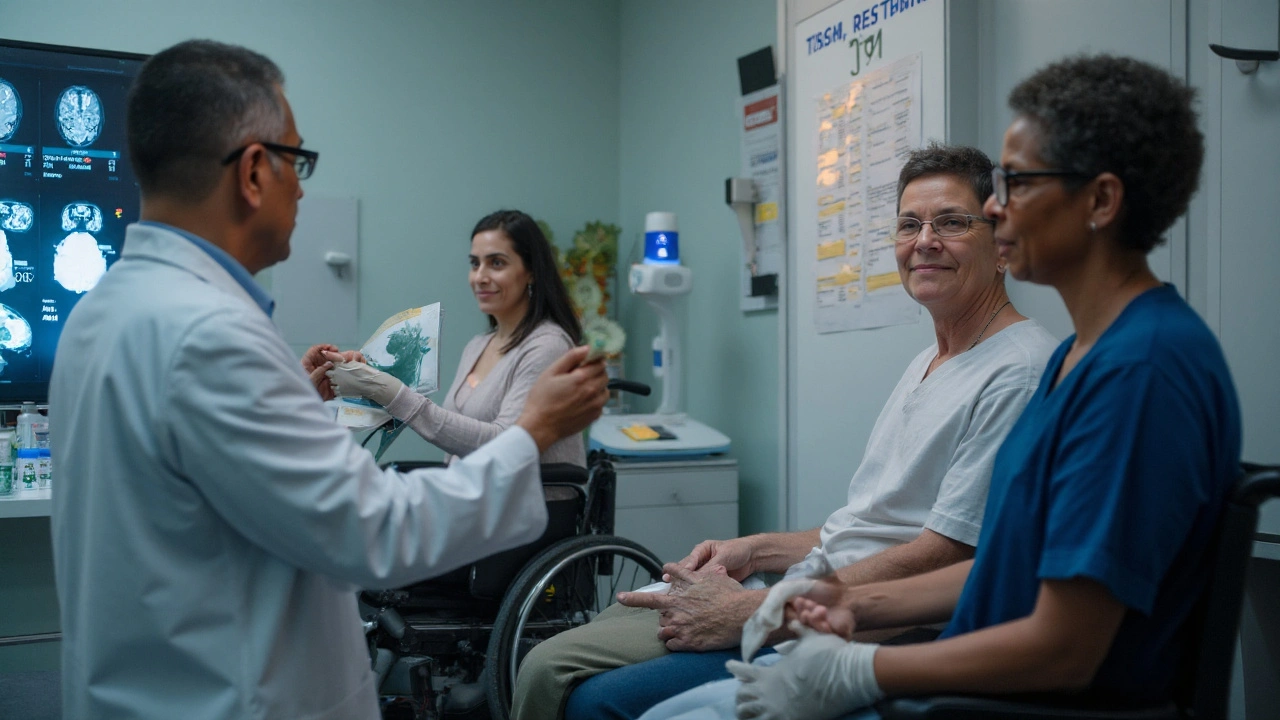Atherosclerosis: What It Is, How It Shows Up, and How to Fight It
Ever wonder why your heart sometimes feels like it’s working extra hard? That’s often because of atherosclerosis – a mouthful that simply means plaques are building up inside your arteries. These plaques are made of cholesterol, fat, calcium, and other stuff that sticks to the artery walls, narrowing the passage for blood. When blood can’t flow freely, you risk chest pain, a heart attack, or a stroke.
Most people think atherosclerosis only hits older folks, but it can start in your 20s if you’ve got the right (or wrong) habits. Smoking, a diet high in saturated fats, a sedentary lifestyle, and high blood pressure are the usual suspects. Even genetics play a role – if a close family member had heart disease early, you might need to watch your numbers more closely.
Spotting the Signs Before It’s Too Late
Early atherosclerosis rarely causes obvious symptoms. That’s why regular check‑ups matter. When plaque starts to seriously block an artery, you might notice:
- Chest discomfort or pressure during activity (angina)
- Shortness of breath even with mild exertion
- Pain, numbness, or weakness in a leg if peripheral arteries are affected
- Sudden weakness or trouble speaking if a brain artery is involved
If any of these pop up, call your doctor right away. Early detection can mean the difference between medication and a major procedure.
How Doctors Diagnose Atherosclerosis
Doctors use a mix of simple tests and high‑tech imaging. Blood work will tell you your cholesterol, triglycerides, and blood sugar levels. Blood pressure checks are a must. For the arteries themselves, they might order:
- An ultrasound of the carotid arteries (looks for plaque in the neck)
- A coronary calcium scan (shows calcium deposits in heart arteries)
- CT angiography or a standard angiogram if they need a detailed view
These tools help them decide how aggressive your treatment should be.
Now that you know what to look for, let’s talk about what you can actually do to slow or reverse plaque buildup.
Practical Steps to Prevent or Treat Atherosclerosis
1. Eat smarter. Swap fried foods and sugary drinks for fruits, veggies, whole grains, and lean proteins. The Mediterranean diet – lots of fish, olive oil, nuts – is a proven heart‑healthy plan.
2. Move your body. Aim for at least 150 minutes of moderate aerobic activity a week. Even brisk walking, cycling, or dancing counts. Consistency beats intensity.
3. Quit smoking. If you light up, quitting is the single most effective thing you can do for your arteries. Resources like quit‑lines and nicotine patches make it easier.
4. Control blood pressure and diabetes. Follow your doctor’s medication plan, monitor at home, and keep diet low in sodium and refined carbs.
5. Take prescribed meds. Statins, blood thinners, or other drugs may be recommended to lower cholesterol or keep blood thin. Don’t skip doses – they’re part of the plaque‑fighting strategy.
6. Stay on top of check‑ups. Annual labs and periodic imaging keep you and your doctor informed about any changes.
Remember, atherosclerosis isn’t a one‑time event. It’s a slow process that you can steer with daily choices. By understanding what it is, recognizing early signs, and adopting heart‑friendly habits, you give yourself the best shot at a healthier, longer life.
Got questions about your risk? Talk to a healthcare professional. They can tailor a plan just for you, mixing lifestyle tweaks with any needed medication. The sooner you act, the better your arteries will thank you.
Types of Sclerosis Explained: MS, ALS, Systemic Sclerosis & More
A clear guide to the major types of sclerosis-MS, ALS, systemic and more. Symptoms, tests, treatments, red flags, and who to see, in plain language.
